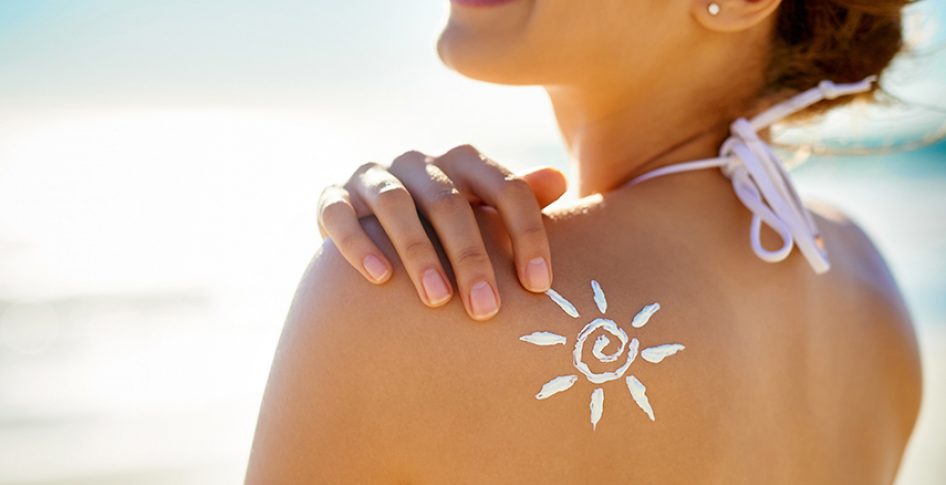Quit complaining and wear your damn sunscreen

Labor Day marks the end of the summer fun and the beginning of fall responsibilities. This seems like an appropriate time for me to begin belaboring the obvious point--protect your skin from the sun. I am a dermatologist. You came to my blog. This should come as no surprise. There is a reason dermatologists nag at you about sun exposure. Not only is there overwhelming scientific evidence about the dangers of unprotected sun (like unprotected sex), but the throughout the course of our careers we see firsthand the unpleasant effects--wrinkles, saggy skin, spots, roughness, crepe-like skin, dilated blood vessels, large pores, cobblestoning, cysts, and ultimately skin cancer.
Labor Day marks the end of the summer fun and the beginning of fall responsibilities. This seems like an appropriate time for me to begin belaboring the obvious point—protect your skin from the sun. I am a dermatologist. You came to my blog. This should come as no surprise. There is a reason dermatologists nag at you about sun exposure. Not only is there overwhelming scientific evidence about the dangers of unprotected sun (like unprotected sex), but the throughout the course of our careers we see firsthand the unpleasant effects—wrinkles, saggy skin, spots, roughness, crepe-like skin, dilated blood vessels, large pores, cobblestoning, cysts, and ultimately skin cancer.
I know you have heard all of this before. Some of you even believe me. Some of you are trying to protect yourselves. Recent studies have shown that fear of wrinkles outweighs fear of skin cancer in leading people to reduce sun exposure. I can’t tell you how many times I see a person who looks 20 or more years older than they need to look. And it is almost always due to chronic, day to day sun exposure. And those who smoke and do sun have more than double the damage.
You don’t like sunscreen. I know. You think it is greasy. I know. It smells like sunscreen. I know. The kids hate it. I know. Wear it anyway. Use clothing as protection. Don’t try to tan. Be reasonable.
There are sunscreens that are actually quite nice. Surprise—we sell one. Try DCL-Super-Sheer-Sunscreen-SPF-50. We chose it because it is quite nice, non-sticky. You won’t be able to tell you have it on.
Here is the rundown:
- Avoid sun between 10-4.
- Stay in the shade whenever possible and keep infants under 6 months of age out of the sun. Infants’ temperature regulation ability is inadequate. Sunscreen will absorb through their thin, permeable skin. So keep them in the shade.
- Wear protective clothing-long-sleeve shirt, wide brimmed hat, pants, and UV protective sunglasses.
- Anyone over the age of 6 months should use a broad-spectrum sunscreen with a sun protection factor (SPF) of at least 30 that protects against both of the sun’s harmful ultraviolet rays: UVA and UVB.
- Look for Zinc Oxide, Titanium Dioxide, Avobenzone or Mexoryl.
- Apply enough-one ounce to whole body. Put on twice the amount you think you need. That means a 6 oz tube should last 6 applications, not 6 years.
- Apply 30 minutes before sun exposure.
- Sunscreen effectiveness is reduced after about 2 hours. Reapply every 2 hours for regular sunscreen, every hour if in the water or toweling off.
- Use a waterproof sunscreen when you swim outdoors.
- Don’t keep it in your car. Sunscreen breaks down in the heat. When it turns to a liquid mess, throw it away.
- Make up with SPF less than 15 is not adequate.
- No sunscreen screens out all rays, you cannot use it as an excuse to stay out longer.
- Realize that an SPF 30 does not give twice the protection of SPF 15. SPF 15 absorbs 93 percent of the sun burning rays, and SPF 30 has 97 percent absorption. SPF doesn’t measure UVA protection.
- Take special precautions when the National Weather Service’s daily ultraviolet (UV) radiation index predicts UV exposure levels of moderate and above (5 – 10+) or near surfaces that reflect the sun’s rays, such as water, snow and sand. Whenever possible, stay inside or in the shade. Use a high-SPF sunscreen.
- If there are any changes in the size, color, shape, or texture of a mole, the development of a new mole, any crusted, bleeding, scaly, “pearly”, or red bumps, or any other unusual changes in the skin, see your dermatologist immediately.
The bottom line is that you won’t regret it. Especially when you look 10 years younger than your best friend. So quit complaining and wear your damn sunscreen.